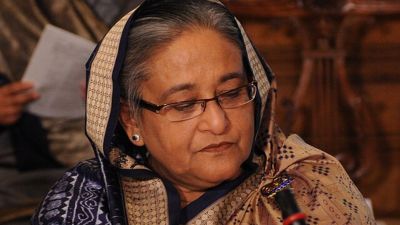Will Hindu-dominated seats of Jammu be key to govt in J&K again?
The contests in the 47 seats of the division were a straight Cong-BJP fight, where the results will seal the electoral fate of 25 ex-MLAs and 17 former ministers
 Voters stand in a queue at a polling station to cast votes during the second phase of Jammu and Kashmir Assembly elections, in Srinagar district. (PTI Photo)
Voters stand in a queue at a polling station to cast votes during the second phase of Jammu and Kashmir Assembly elections, in Srinagar district. (PTI Photo)With a day to go for Assembly poll results and most exit polls predicting a hung House in Jammu and Kashmir, observers feel the Jammu division, especially Hindu-dominated districts, will emerge as the key in the power corridors of the Union Territory (UT).
While the contest in the Kashmir division is mainly between the National Conference (NC) and Peoples Democratic Party (PDP), the Congress and BJP are the main contenders in the Jammu division.
BJP
The party contested all 47 seats in Jammu province and is banking on the votes of the Pahari ethnic group and the Padari tribe, which were granted Scheduled Tribe (ST) status earlier this year.
Six of the nine ST-reserved seats in the Union Territory (UT) fall in Jammu province, of which five fall under the Rajouri-Poonch districts while one is in Reasi. Paharis make up the majority of the electorate here. It is the first time that Assembly seats have been reserved for STs in J&K.
The BJP is also banking on the newly carved out Paddar Assembly constituency, where the majority Padari tribe makes up the electorate along with the Paharis, Gadda Brahmins and Kolis.
Congress-NC combine
The Congress and NC contested 30 and 17 seats respectively in Jammu, and were engaged in “friendly fights” in four.
Both parties are banking on the consolidation of Gujjar voters, who are miffed with the BJP for inducting the Paharis into the ST category and feel the move diluted political representation granted to them post the abrogation of Article 370 in August 2019.
Other regional parties and Independents
The Democratic Progressive Azad Party (DPAP), led by former Union Minister Ghulam Nabi Azad, contested half a dozen seats and is hopeful that its candidate from Doda East – former minister Abdul Majid Wani – will help it open its account in the region.
The Altaf Bukhari-led Apni Party had put up candidates only on a couple of seats and is pinning its hopes on Reasi.
With exit polls predicting a hung House, rebel leaders of the three parties – NC, BJP and Congress – who contested as Independents are likely to play a crucial role in government formation should they emerge victorious.
Electoral fate of prominent faces
Tuesday’s results will seal the fate of 25 former MLAs, 17 ex-ministers and two former policemen and bureaucrats, who quit service ahead of the polls to take the political plunge.
Some other prominent faces whose fate hangs in the balance include Choudhary Lal Singh and Chander Prakash Ganga, who were BJP ministers in the coalition government with the PDP and were asked to resign after widespread criticism over them attending a rally organised in support of the Kathua rape accused. This time, Singh is the Congress candidate from Basohli while Ganga is the BJP’s pick from Vijaypur.
The NC is banking on the victory of its candidate Surinder Choudhary from Nowshera where BJP’s J&K President Ravinder Raina is seeking a second term.
Other former ministers in the fray include Tara Chand (Congress) from Chhamb, Surjit Singh Slathia (BJP) from Samba, Sham Lal (BJP) and Ajay Sadhotra (NC) from Jammu North, Devender Singh Rana (BJP) from Bagrota and Harsh Dev Singh (Panthers Party) from Chenani.
Hindu-dominated districts
The predominantly Hindu inhabited districts of Jammu, Samba, Kathua and Udhampur, which encompass 24 Assembly seats, are likely to play a key role in government formation.
In 2014, the BJP had swept the four districts, which prior to the 2022 delimitation encompassed 21 seats, winning 18 of them. It eventually formed the government with the PDP on the strength of these numbers.




- 01
- 02
- 03
- 04
- 05



























